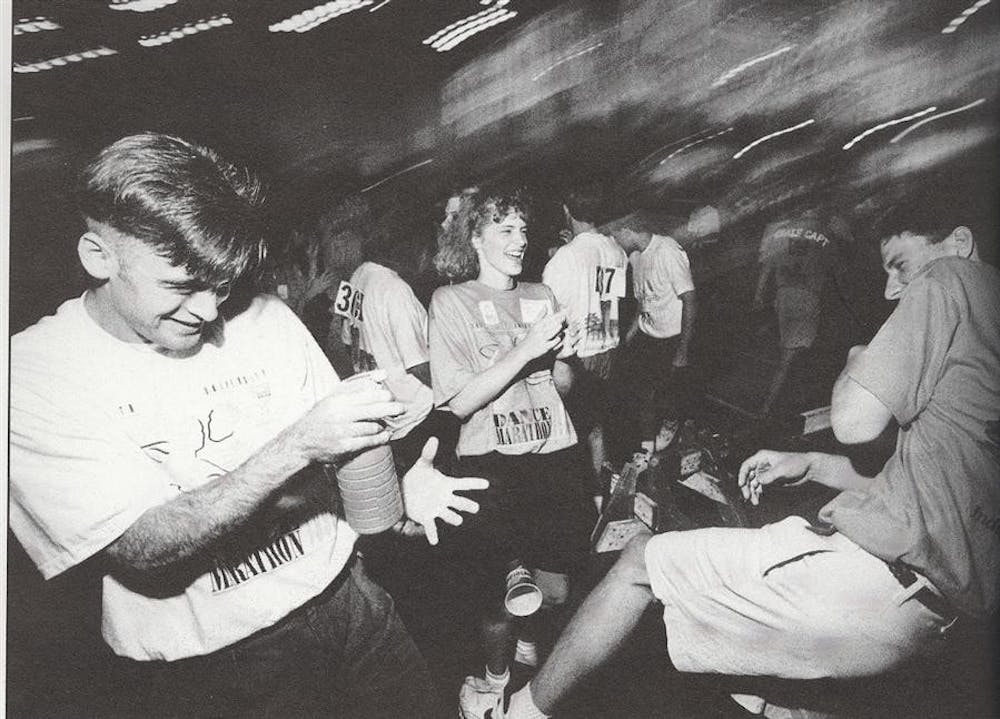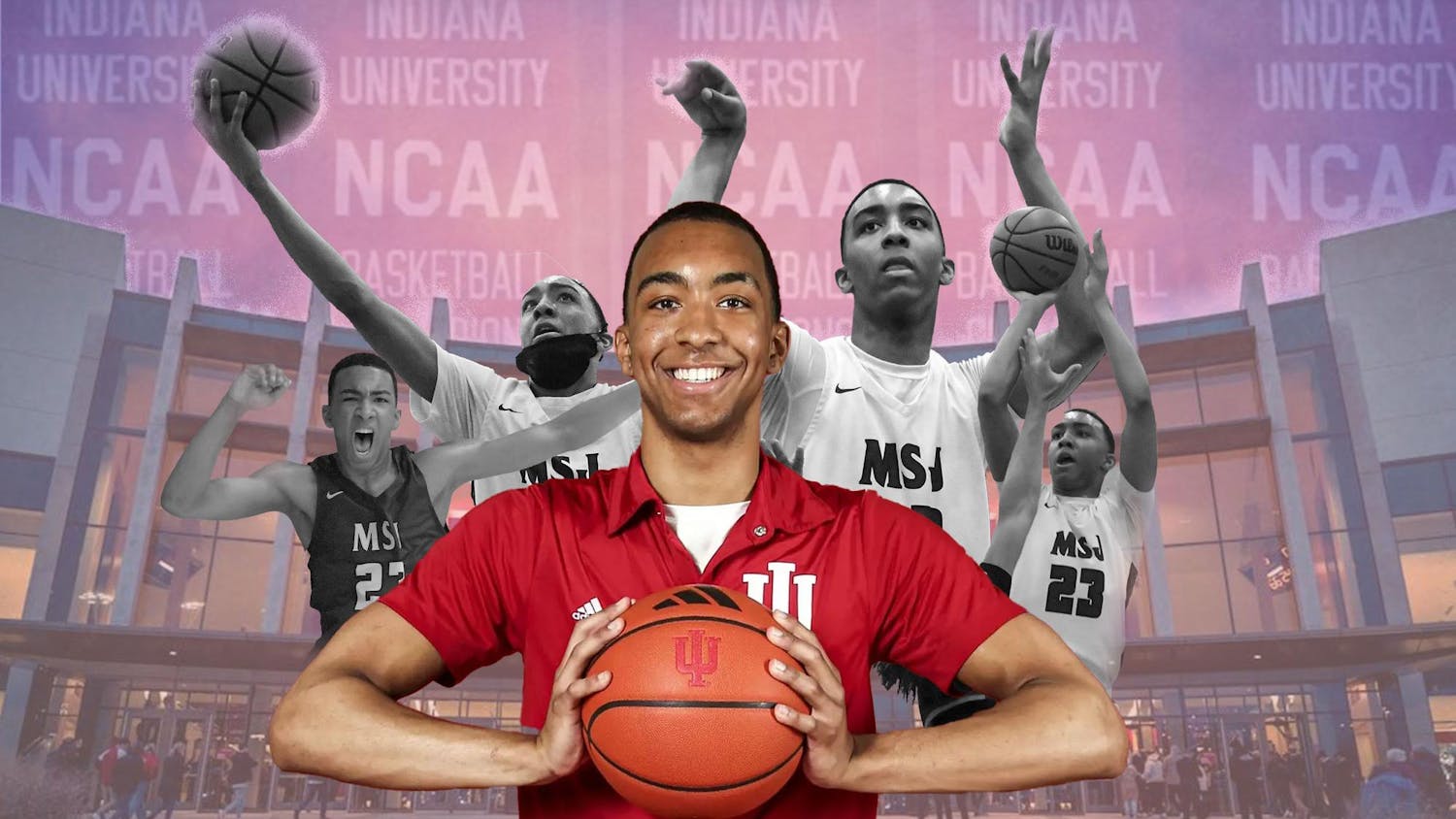Music blared through the speakers.
“Everybody dance now!”
C+C Music Factory’s “Gonna Make You Sweat,” enticed 200 IU students to join the choreographed line dance that would kick off the 36 hours that lay ahead of them at the first IU Dance Marathon.
After a day and a half of non-stop dancing, IUDM had raised $10,900.
That was in 1991.
Nearly 21 years and more than $10 million later, the structure of IUDM has evolved, but the mission has remained consistent: It’s all “For The Kids.”
Back to the Beginning
It started with a kid from Kokomo, Ind., named Ryan White.
At 13, White was diagnosed with AIDS after receiving a contaminated blood transfusion.
“It was kind of when AIDS first started coming about and no one really knew about it, so there was a lot of turmoil in the community,” said Gretchen Ahlers, IUDM alumni relations director. “He actually ended up getting banned from his school, and his family just didn’t know what to do, so they went to Riley (Hospital for Children).”
White lost his battle in April 1990 and passed away the spring before he was to attend IU.
His friends from high school transitioned to college.
But one friend, Jill Stewart, wanted some way to “carry on Ryan White’s name and his passion for Riley”, Ahlers said.
Stewart went to her student advisor to brainstorm ideas, and he proposed a dance marathon based on the annual 48-hour event at Pennsylvania State University to benefit Penn State Hershey Children’s Hospital.
Stewart asked Bryan Neale, then-president of the Interfraternity Council, to help her. He agreed and solicited the help of Kristi Engle, then-president of IU Panhellenic Association.
Stewart, Neale and Engle flew to Pennsylvania to observe Penn State’s Dance Marathon and spent the weekend taking notes and interviewing participants. The three made a list of about a dozen student leaders on campus on a yellow legal pad.
“We knew if we wanted this to succeed, we had to get the best core group of student leaders,” Neale said. “Our number one goal was to donate at least one dollar to Riley Hospital for Children and have a whole lot of fun.”
Establishing an Evolving Tradition
The first IUDM raised $10,900 — $900 from the dancers and $10,000 from the sales of White’s autobiography, “Ryan White: My Own Story.”
“You actually had to sign up with someone, and it had to be someone of the opposite sex,” Ahlers said. “It was like a date-a-thon almost.”
It was the beginning of a new tradition that would become the second largest college philanthropy in the U.S.
That year, IUDM also made a promise to Riley, Ahlers said.
“We told Riley that we would raise $10 million for the Ryan White Center for
Infectious Disease at Riley,” she said.
Riley opened the center in 2000. In 2010, IUDM’s 20-year funding total surpassed its $10 million goal.
The 2011 dance marathon structure won’t be the same as the first year, but the 20 years that have passed are a timeline of evolving traditions that define IUDM today.
With increasing participation and a drive to raise more money each year, dancer qualifications and fundraising methods vary annually.
This year, dancers can sign up for a shift rather than the full 36 hours. This came from concerns about dancer welfare and venue accommodation, said IUDM President Michael Essling.
This year’s marathon will be at IU Tennis Center due to construction at the HPER.
“It does not change the purpose or the mission,” Essling said.
Maintaining the Mission
Until 2005, the letters “FTK”, which stood for “For The Kids”, and White’s initials were on all IUDM apparel.
The IUDM community added a third set of initials to its slogan in April 2005, after Ashley Louise Crouse, IUDM vice president of communications, died in a car accident.
Their apparel now reads, “FTK-ALC-RW,” and Crouse’s memory is preserved by the dance marathon.
“It started in memory of Ryan White,” Essling said. “But whether we are motivated by Ryan, who died 21 years ago or Ashley, who passed away six years ago, we have really tried to keep core principles.”
Maintaining IUDM’s longevity has been a core tradition since 1991, and Neale said IUDM founders returned in 2010 to see how it had changed since its inception.
“You still have a special place in your heart for it,” he said. “The thing that stood out to me the most was the ability of young people and students to achieve ridiculously outstanding results year after year after year.
The dance marathon has never changed. It’s all about giving good and creating good, and having a good time doing it.”
The evolution of dance:A look at the history of IUDM

Get stories like this in your inbox
Subscribe





